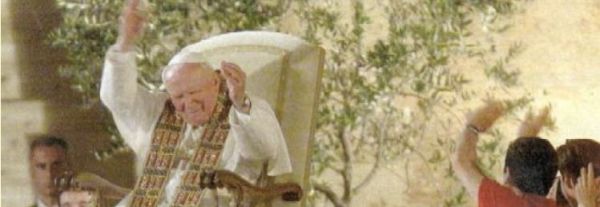Meditation on the Easter season
1. The Easter Sequence takes up the proclamation of hope that rang out at the solemn Easter Vigil: "The Lord of life was dead; now, alive, he triumphs", and gives it a new impact. These words guide the reflection of our meeting which is taking place in the luminous atmosphere of the Octave of Easter.
Christ triumphs over evil and death. This is the cry of joy that bursts from the heart of the Church during these days. Victorious over death, Jesus offers to those who accept and believe in him the gift of life that dies no longer. His death and his Resurrection therefore constitute the foundations of the Church's faith.
2. The Gospel narratives refer, sometimes in rich detail, to the meetings of the Risen Lord with the women who hurried to the tomb, and later, with the Apostles. As eye-witnesses, it is precisely they who were to be the first to proclaim the Gospel of his death and Resurrection. After Pentecost, they were to affirm fearlessly that what the Scriptures say about the Promised Messiah is fulfilled in Jesus of Nazareth.
The Church, the depository of this universal mystery of salvation, passes it on from generation to generation to the men and women of every time and place. In our time too, with the commitment of believers, we must make the proclamation of Christ, who through the power of his Spirit now lives triumphant, ring out clearly.
3. So that Christians may properly carry out this mandate entrusted to them, it is indispensable that they have a personal encounter with Christ, crucified and risen, and let the power of his love transform them. When this happens, sadness changes to joy and fear gives way to missionary enthusiasm.
John the Evangelist, for example, tells us of the Risen Christ's moving meeting with Mary Magdalene, who, having gone very early to the tomb, finds the sepulchre open and empty. She fears that the body of the Lord may have been stolen, so she is upset and weeps. But suddenly someone whom she supposes to be "the gardener" calls her by name: "Mary!". She then recognizes him as the Teacher, "Rabboni", and recovering quickly from her distress and bewilderment, runs immediately to announce this news enthusiastically to the Eleven: "I have seen the Lord" (cf. Jn 20: 11-18).
4. "Christ my hope is arisen". With these words, the Sequence highlights an aspect of the paschal mystery that men and women today need to understand more deeply. Perturbed by latent threats of violence and death, people are in search of someone who will give them peace and security. But where can they find peace other than in the innocent Christ who reconciled sinners with the Father?
On Calvary, Divine Mercy manifested his face of love and forgiveness for everyone. In the Upper Room after his Resurrection, Jesus entrusted the Apostles with the task of being ministers of this mercy, a source of reconciliation among men and women.
In her humility, St Faustina Kowalska was chosen to proclaim this message of light that is particularly fitting for the world of today. It is a message of hope that invites us to abandon ourselves in the hands of the Lord. "Jesus, I trust in you!", the saint liked to repeat.
May Mary, Woman of Hope and Mother of Mercy, obtain for us to personally encounter her Son, who died and rose! May she make of us tireless workers for his mercy and his peace.
[Pope John Paul II, General Audience 14 April 2004]












